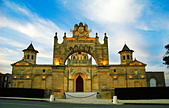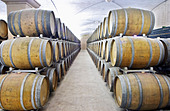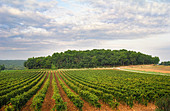—

Please note: this newsletter has been imported to the archive from our old site. Formatting and images will not display correctly! Links will in many cases be outdated!
—
|
||||||||||||
| News from BKWine | ||||||||||||
| “World’s Best Wine Tours” – Travel + Leisure Magazine, on TravelAndLeisure.com
BKWine offers you two possibilities to go wine travelling this autumn:
For more information please contact us on email or on phone (we’re on French time). Visit our video channel https://www.youtube.com/bkwine to meet some of the producers we visit. What do people think about a wine tour with BKWine? That is of course a question that we think is very important. We want it to be a wonderful and memorable experience for everyone. Here are some of the comments we’ve had from customers this season:
Custom wine tours You’ll get a tour designed exactly according to your requirements and tastes, made by one of the most experienced wine people in the business. We personally visit some 200 wineries and taste thousands of wines every year; we write on wine for various wine magazines (we had more than 30 articles published last year); in 2007 we published a ground breaking book on the wine of the Languedoc and in 2009 we published a book on vine growing and wine making – unique in its kind. And we have organised hundreds of wine tours over the years. More info on the custom designed and bespoke BKWine wine tours and travel here! Wine tours in Finnish More info on the Finnish wine tours here: Viinimatkoja |
||||||||||||
| Recommendations | ||||||||||||
| A selection of what we have tried, tasted or visited recently. □ Producers
Louis Sipp, Ribeauvillé, Alsace Like all producers in Alsace Louis Sipp makes a huge number of wines. One of our favourites is Riesling Grand Cru Osterberg 2008. It’s dry with beautiful citrus aromas on the nose and very fresh in the mouth. The grapes are grown in a rather cool terroir which gives the wine a certain fatness. Riesling Grand Cru Kirchberg 2008 is from a warmer soil with a sunny exposition and the wine is rounder but still totally dry with a good minerality, even sharpness. This is two brilliant Rieslings. Also keep a look out for the Pinot Gris from Louis Sipp, especially the one from Grand Cu Kirchberg. The 2008 has 20 grams of residual sugar but nobody would guess! Click here for address and more recommendations. Read about more recommended producers on the site: Favourite Producers □ Wine Bars and Restaurants Paris: La Régalade Saint Honoré, Paris 1 The set three course menu at 33 euro is the same for lunch and dinner and very good value for money. The food is creative although in the French bistro tradition. We started with a perfectly cooked tuna fish and continued with grilled filet de dorade with lentilles verts as main course. The soufflé au grand marnier for dessert is a dream. But fish is not the only thing on the menu; there is chicken, entrecote, scallops and several vegetarian starters. The menu changes according to the seasons. The wine list is interesting and the prices very decent. You get some good bottles for between 20 and 30 euro. Booking necessary. Closed Saturday and Sunday. Click here for address and more recommendations. □ Wine of the Month Criteria: an interesting wine (not too cheap) and one that you can enjoy with dinner or friends (not too expensive). And very good! It also underlines that if you venture outside the most famous wine regions you can easily find good wines at modest prices. Price 7€, web: Web: https://www.belisario.it/ Britt’s Wine of the Month Read more recommendations on restaurants and wine bars on my Restaurant and Wine Bar page. |
||||||||||||
| News from the Wine World | ||||||||||||
| Towards a European definition of organic wine: CEVinBio?
Vacqueyras is in the region of southern Rhône, 30 kilometres northeast of Avignon and quite close to the beautiful mountains of the Dentelles de Montmirail. Some of its illustrious neighbours are Gigondas, Séguret, Sablet, Beaumes-de-Venise, Cairanne and Rasteau. The vineyards of AOC Vacqueyras cover an area of 1390 hectares and they are the most part situated around the small towns of Vacqueyras and Sarrians. The climate is Mediterranean with the northern Mistral wind blowing frequently and sometimes furiously. It is well liked though, because it keeps the vineyards dry and healthy. The garrigue is omnipresent in Vacqueyras. The perfume of wild herbes de provence is in the air and gives the wines a distinct spicy character. The soil is often extremely stony. A Vacqueyras must be made of at least 50 % Grenache and between 20 and 50 % of Syrah and/or Mourvèdre. Cinsault is also used, but sparingly. We asked some of the producers who were present at the tasting in Paris about their impressions about the first 20 years as an appellation. ”It was a bit difficult in the beginning, the first 5-6 years”, says Frédéric Vache at Clos des Cazaux. ”We went from being one of the best Côtes-du-Rhône-wine to become an unknown AOC. But in the end of the 1990s there was the big boom for Châteauneuf-du-Pape which resulted in high prices which meant that we got our chance. Consumers that didn’t want to pay over prices for a Châteauneuf turned to Vacqueyras instead.” An important development during these 20 years is the increase in the number of private wine producers. In 1990 there were only 20, now there are 60-65. “There were a lot of young people who left the cooperatives in the 90s and started to make their own wine”, says Christian Vache at Domaine la Monardière. Serge Ferigoule at Domaine Sang de Cailloux points out another important development:”We are better now at taking care of our land”, he says.” Organic and sustainable culture is growing.” His own Domaine Sang de Cailloux (which means the blood of the stones…) will be biodynamically certified next year. “My wines have gained in finesse since I started in biodynamics and the terroir and the vintage is more obvious.” Tasting 20 years of Vacqueyras: 1989-2009 — Vacqueyras 1990 Traditionelle — Vacqueyras 1991 Cuvée Prestige — Vacqueyras 1993 Vincilia — Vacqueyras 1993 Classique — Vacqueyras 1994 Vieilles Vignes — Vacqueyras 1995 Lopy — Vacqueyras 1996 Lopy — Vacqueyras 1997 Traditionelle — Vacqueyras 1998 Lopy — Vacqueyras 1999 Cuvée des Templiers — Vacqueyras 2000 Vieilles Vignes — Vacqueyras 2001 Vieilles Vignes — Vacqueyras 2001 Vincilia — Vacqueyras 2003 Cuvée Prestige — Vacqueyras 2004 Cuvée des Templiers — Vacqueyras 2005 Ceps d’or — Vacqueyras 2005 Le Clos — Vacqueyras 2006 Sélection Maître de Chais — Vacqueyras 2008 Cuvée Templier — Vacqueyras 2009 la Tour aux Cailles New premium wines from Trivento in Mendoza
Trivento was created in 1996 and is today one of the five biggest exporters of wine from the Mendoza. They have 1289 hectares spread over several different vineyards. The vines are around 15 years old. The name Trivento means “three winds” and refers to the three winds that are frequent in Mendoza: the cold polar wind, the warm zonda, and the wind from the south-east called sudestada, that often brings with it storms and sometimes hail. “The winds are a challenge for us, but also a part of Mendoza”, says Maximiliano Ortiz, the winemaker. They have also been successful at Trivento with torrontes, chardonnay and syrah. A favourite of ours is Trivento Golden Reserve Syrah 2007 made from grapes coming from the Uko Valley. The wine has a good syrah style with quite a lot of black pepper in the finish and a very good an generous fruit, and just the right amount of tannins. Also delicious is the Trivento Amado Sur Torrontes made from 75% torrontes, 15% viognier, and 10% chardonnay. Maximiliano Ortiz, the winemaker, likes the combination of viognier and torrontes: “Viognier adds aromas of apricot and peaches to the flowery style of torrontes.” The name of the vineyard and the soil is more important than the grape variety in Burgundy, according to BIVB ”It is important that we can explain to the consumers the big differences we have in terroir. But this word, terroir, is difficult for certain consumers to understand. Sometimes they ask, why can’t you just put the grape and the signature of the producer on the label?!” But of course Raphaël, or any other producer in the Côte d’Or, would never simplify things like that. It would make life easier, he says, instead of making, say 20-25 different wines from 15 hectares, but much more boring. ”Burgundy is not a beginner’s wine”, says Raphaël, ”our target group is consumers that already know something about wine. If people already know our wines and our grape varieties, then you can start talking about terroir and climats.” |







 Åsa’s Wine of the Month
Åsa’s Wine of the Month








 We recently had the occasion to taste a range of premium wines from Trivento in Mendoza, Argentina. The wines have just been launched in the “on special order only” range at the Swedish monopoly but our comments may be of interest also to other than our Swedish readers.
We recently had the occasion to taste a range of premium wines from Trivento in Mendoza, Argentina. The wines have just been launched in the “on special order only” range at the Swedish monopoly but our comments may be of interest also to other than our Swedish readers.





